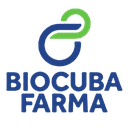Executive Secretary

VIII International Symposium on Chemistry and Pharmaceutical Sciences
VIII Conference "Chemical Sciences"
Abstract
Developing new dermal formulations for the treatment of onychomycosis with the active pharmaceutical ingredient (API) Furvina requires appropriate analytical methods to determine drug levels during absorption, biodistribution, metabolism and excretion (ADME). Biological matrices such as blood, plasma, serum or tissues are generally very complex in composition, whereas urine is a less complex matrix. Urine is the main route of elimination of the waste products of metabolism through the renal apparatus and in most cases the analytes of interest are found in very low concentrations, which makes it necessary to concentrate the sample so that they can be detected. This work establishes a new simple, precise, accurate and specific analytical method that allows the determination of low concentrations of Furvina® in human urine by applying dispersive liquid-liquid microextraction (DLLME) and quantifying the analyte by capillary liquid chromatography with diode array detection (HPLC-DAD) (1,2). For DLLME, 10 mL of urine were preconcentrated in 400 μL of chloroform using 1.5 mL of acetonitrile as dispersant agent (3). The extract, previously evaporated and reconstituted in 50 μL of acetonitrile, was analyzed by HPLC-DAD. LC separation was carried out using a Zorbax C18 (5 μm, 0.5 × 150 mm) column and a mobile phase consisting of 0.1% formic acid in wather and acetonitrile, in the 20:80 proportion with 20 µL min-1 flow-rate. The analyte eluted with a retention time of 1.9 min. Matrix-matched calibration was used for quantitation purposes. The method showed linearity in the 0.01- 1 μg/mL concentration range.
Resumen
El desarrollo de nuevas formulaciones dérmicas para el tratamiento de la onicomicosis con el ingrediente farmacéutico activo (IFA) Furvina® requiere métodos analíticos apropiados para determinar los niveles del fármaco durante su ADME. Las matrices biológicas como la sangre, el plasma, el suero o los tejidos suelen tener una composición muy compleja, mientras que la orina es una matriz menos compleja. En este trabajo se establece un nuevo método analítico sencillo, preciso, exacto y específico que permite determinar bajas concentraciones de Furvina® en orina humana mediante la aplicación de la microextracción líquido-líquido dispersiva (DLLME) y la cuantificación del analito mediante cromatografía líquida capilar con detección por matriz de diodos (HPLC-DAD) (Saraji et al., 2014; Viñas et al., 2014). Para la DLLME se preconcentraron 10 mL de orina en 400 μL de cloroformo utilizando 1,5 mL de acetonitrilo como agente dispersante (Arroyo-Manzanares et al., 2020). El extracto, previamente evaporado y reconstituido en 50 μL de acetonitrilo, se analizó por HPLC-DAD. La separación por LC se llevó a cabo utilizando una columna Zorbax C18 (5 μm, 0,5 × 150 mm) y una fase móvil compuesta por ácido fórmico al 0,1% y agua-acetonitrilo en la proporción 20:80 con un caudal de 20 µL min-1. El analito eluyó con un tiempo de retención de 2,9 min. Para la cuantificación se utilizó una calibración ajustada a la matriz. El método mostró linealidad en el rango de concentración de 0,01- 1 μg/mL.
About The Speaker

MsC. Zenia Pérez Rodríguez

Trabaja como profesor en la UCLV
Discussion




